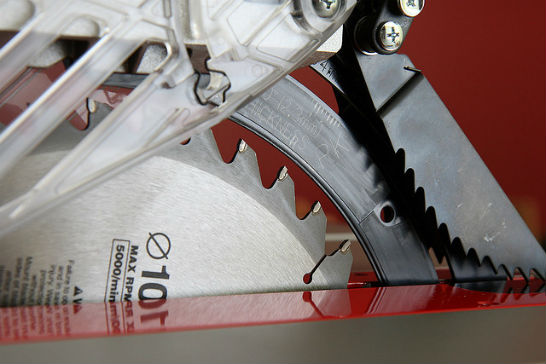Table Saw Injuries: A Look at the Game-Changing Cases Against Ryobi
Back in the early 2000s, Ryobi made a costly decision: it, along with several other companies, would not be licensing the flesh-sensing, reaction safety technology developed by SawStop for its line of table saws. This decision was initially meant to cut royalty fees and consumer costs, but it has ultimately turned into an expensive litigation nightmare for the power tool giant. While table saw safety is typically left up to the consumer with minimal intervention from the saw-maker itself, many individuals who have sustained injuries while using Ryobi’s products are stepping forward to have their day in court over a safety mechanism they say should be mandated by the government.
As table saw injuries remain at an all-time high and consumer complaints continue to surface, we take a brief look at two of the game-changing cases Ryobi has faced head on over the years:
Carlos Osorio – Massachusetts, 2004
When Carlos Osorio began working for a floor installation shop in 2004, his table saw experience was limited. Under the guidance of his boss, he learned the basics of using the machine and progressed to independent work in a short time. But within two weeks of starting the job, Osorio suffered irreparable damage to several of his fingers while cutting boards for an oak floor. He underwent five surgeries and years of rehabilitation without much success in recovering the feeling or function of his injured fingers.
In 2006, Osorio’s lawyers saw a demonstration of SawStop technology and immediately filed a civil suit on his behalf against One World Technologies, the makers of Ryobi. The suit claimed that Ryobi was negligent in not incorporating readily available flesh-sensing technologies in their products, causing unnecessary trauma and injury to Osorio.
The case was unprecedented and caused uproar in the power tool industry. What was even more of a blow than the suit itself was that a jury ordered Ryobi to pay $1.5 million in damages to Osorio in 2010, which put company liability at the forefront of the power tool industry’s concerns.
Brandon Stollings – Illinois, 2007
In May 2007, experienced carpenter Brandon Stollings was using a portable 10-inch Ryobi table saw when he experienced a “kick-back†that sent his cutting material flying and his fingers into the blade. The incident left Stollings maimed, and he filed a suit against Ryobi in 2008.
While the crux of Stollings’ case was that Ryobi had neglected to include a riving knife with the saw, the suit also made note of the fact that the company had failed to adopt flesh-sensing safety technology like SawStop. Both safety measures could have prevented his injury.
Initially, a jury did not find Ryobi liable for the injuries sustained by Stollings. But years after the proceedings, Stollings regrouped with a Dallas based law firm that specialized in table saw injuries and was awarded $1.25 million.
The Influence of SawStop
In both cases, Steve Gass—the inventor of SawStop—testified that the plaintiffs would have, without question, escaped their injuries had Ryobi simply chosen to license his product. Rejecting this angle, Ryobi refocused their strategy and accused Gass and the plaintiffs’ attorneys of engaging in a conspiracy that intended to either deplete the power tool industry’s resources or force it to adopt the technology. Either way, companies have been slow to make safety changes and lawsuits have continued to crop up.
As of 2015, Ryobi is still navigating court proceedings for several other unresolved lawsuits including two in Illinois and one in Texas, all of which involve the company’s hesitance to incorporate flesh-sensing technology in new products. While there’s no sure-fire way to tell which way the tide will turn in these cases, Ryobi’s rival company Bosch is slated to launch its own reaction safety technology called REAXX later this year, which may indicate that the corporate perspective on these incidents is finally changing.
Image Credit: John Loo

